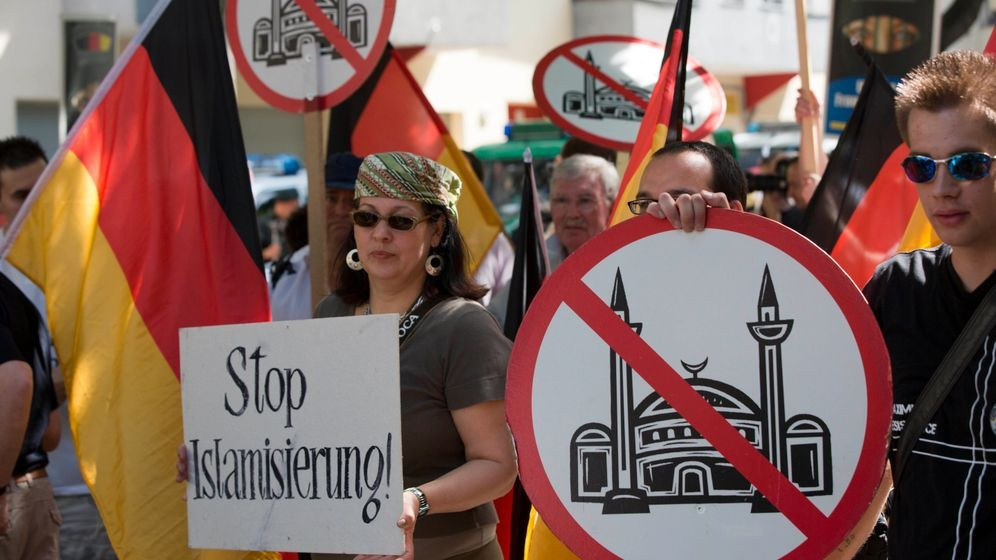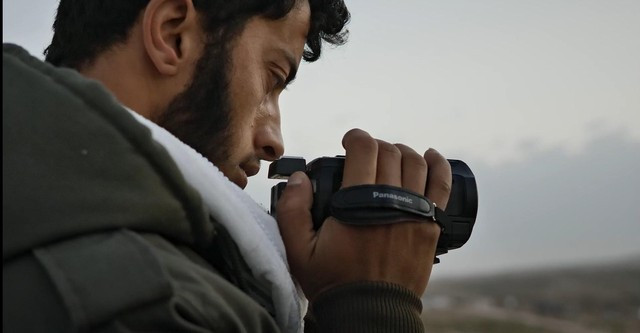
Islamophobia and Racism in Germany Between 2001-2022
Islamophobia is used to express the problem area consisting of oppression and violence mechanisms such as enmity towards Islam, restrictions on the rights and freedoms of Muslims, and exposure to pressure that will prevent them from living their religion and beliefs (Aslan, Kayacı, & Ünal, 2016, p. 452). The word "Islamophobia" first appeared in an article by Edward Said in 1985. After the report published by Runnymede Trust in 1997, Islamophobia started to be used widely. The fact that the report attracted attention in the academic field led to the emergence of the Islamophobia literature (Bodur, 2017, pp. 73-76).
Although Muslims have lived in many countries such as China, India and Russia for years, hostility to Islam has not been systematized as in the Western world. Islamophobia, which is accepted as a continuation of "xenophobia", expresses prejudice or opposition to Islam, those who practice Islam and Islamic elements and consists of four stages: "prejudices", "discrimination and opposition", "exclusion" and "violence" (Buyer, 2019, p. 411). Islamophobia has become a globalized concept today. It affects the relationship between Muslims and non-Muslim communities not only in America and Western countries, but also in Eastern countries such as India and China. The powers that dominate the world have been in search of an other and an enemy for themselves in different centuries. For the West, which concentrated on communism after the First World War, Islam and Muslims became targets after the Cold War period. This situation has been expressed by experts as the ideology of the 21st century (Çetin, 2020). On the basis of this lays the fact that the religion of Islam is not fully understood or that people do not want to try to understand the religion of Islam. Incomplete or incorrect information misleads people. As a result of this misconception, there is a fear towards Islam and Muslims. This fear, over time, turns into negative attitudes and behaviors towards Muslims, hence Islamophobia. It is a reflection of Islamophobia in daily life that a Muslim medical student in Germany had trouble in getting accepted to internship programs she applied for because she wore a headscarf. (+90, YouTube Channel 2019; Aslan et al., 2016, p. 453).
The Emergence of Islamophobia in Germany
After the attack on the twin towers on September 11, 2001, the Muslim world has increasingly become the target of the West. Discrimination against Muslims in many areas began and distrust emerged. Beyond that, this situation, which has now turned into hatred, has moved towards violence and continues to increase everyday.
Germany ranks first among the countries receiving labor migration. Muslims and Turks, who went to Germany as workers since 1960, had an important place among the foreign population in Germany. It was never thought that the Muslims who came to Germany as workers would be permanent in the country. Immigrants, who were thought to return to their countries after their work was completed instead continued to stay at the same place hence turned into a more visible problem for the locals that was previously ignored. The thought that they would return after earning the money they needed and that were key reasins that Muslim workers did not attract attention at first. Muslims either used their own rooms for worship or prayed in the masjids opened by their employers in the places where they worked. Germany, which stopped hiring workers with the Oil Crisis in 1973, increased the attention towards Muslims when they saw that the workers in their country did not return and took their families with them.
The experience of living together between Germans and Muslims turned into Muslim racism after 2001. In Germany, places of worship, religious clothes and symbols were not seen as a problem. On the other hand, Muslims had difficulty in practising their beliefs. In the public opinion poll, nearly half of the German population stated that there are too many Muslims in the country. More than half of them stated that they do not like Muslims and want their lives to be severely restricted. In a study conducted in Berlin, 79% of Muslims said that they were subjected to religious hatred at least once in 2009 and that they had difficulty in going to work while wearing clothes prescribed by Islam (Özyürek, 2005, p. 32).
Islamophobic Attitudes and Behaviors in Germany
Although the existence of Islamophobia is quite an old phenomenon, it has been on the rise in the West and Germany in recent years. Terrorist attacks in the Middle East and Europe are among the reasons for this increase. According to a report published in 2015, more than half of Germans stated that Islam is not a suitable religion for Germany and that Muslims are a threat to Germany. Splashing pig blood or leaving pig carcasses in mosques, drawing crosses in Muslim houses and mosques, attacking women wearing headscarves, and sharing hateful articles on social media are some of the attacks (Almalı, 2018, pp. 137-138). In Germany, in the first half of 2019, there was an average of one Islamophobic attack per day. In January-March, 132 crimes against Muslim places of worship were documented. In the first period of the attacks, it was limited to putting pig heads at mosques and drawing swastikas, but in some recent incidents bullets have been dropped too. In 2018, the number of attacks on Muslims reached 824 in which 33 of them were injured (Karadağ, 2019).
By 2021, there was a 28.65% decrease in Islamophobic incidents in Germany. The restriction of social environments with the Covid-19 epidemic was one cause of this decrease. 80.33% of the recorded 732 Islamophobic crimes are related to the far right. In addition to the documented attacks on mosques and Muslims in particular, there are also undocumented attacks. PEGIDA (Patriotische Europäer Gegen Islamisierung Des Abendlandes), an Islamophobic organization, organized 4 rallies in 2021 on Islam and xenophobia (Leopold Weiss Institute, 2022, p. 266). During the Covid-19 epidemic, Islamophobic expressions spread over the internet in many European countries emerged as a significant problem (Güdül & Bayar, 2022, p. 1996). In the first 6 months of 2022, 152 Islamophobic crimes were recorded. In addition, some of those who were attacked did not file official complaints because of the fear of being detailned upon reporting. Islamophobic behavior towards women who wear headscarves has increased considerably (Karadağ, 2022).
Islamophobia in politics
Worker migration that started in the 1960s was tried to be stopped after the unemployment caused by the oil crisis in 1973, but the move not successful. Labor migration through family reunification continued to increase. In this process, the demand for racist and far-right parties has increased. The common enemy of the far-right parties of countries are foreign workers in the labour force, who are seen as the cause of unemployment and socio-economic problems. All these political discourses hold foreigners accountable for increasing unemployment hence demand their return to their countries. Over time, foreigners, whom they saw as scapegoats, were replaced by hostility towards Islam and Muslims. The importance and status of such far-right leaders is increasing day by day (Soytürk, 2018, pp. 1442-1443).
Under the name of the fight against terrorism, Europe actually reproduces the conditions that feed terrorism because using Islam and terrorism side by side means feeding those who commit terrorist acts under the name of Islam by exploiting Islam ideologically. The politicians' portrayal of radicalization as if it were only a Muslim phenomenon is an example of the ideological blindness in question. This attitude causes Muslims to be further discriminated against and excluded from society.
According to the results of the survey conducted by Stern Magazine in Germany, 49% of the German people wanted foreigners living in Germany who are not citizens of the European Union, not to be given the right to vote in local elections. A portion of 47% is in favor of giving the right to vote. Greens Party, Left Party and Social Democrat Party voters constitute the majority of those who want the right to vote for citizens of other countries (Türkan, 2015, p. 101-102). German Federal Member Sigmar Gabriel said that those who wanted to recite the Qur'an were in the wrong country when he was the Chairman of the German Social Democratic Party. According to him, the most important thing is the constitution that everyone has to obey (Yücel, 2012, p. 159).
After the far-right parties in Germany achieved success with their racist, islamophobic and anti-immigrant rhetoric, they shaped anti-Muslim policies in line with the expectations of the people who had elected them. After 2001, as a result of events generally shaped around terrorism, the acceptance of Muslims into German citizenship decreased at a high rate. After the attacks that took place in London in 2004, Christian Wulff, President of the German Christian Democratic Union Party, suggested that there may be attacks similar to these attacks and that cameras should be installed in mosques. The control and discriminatory behavior applied to this extent in Germany was not even implemented in England after the London attack (Esposito & Kalın, 2015, pp. 78-109).
An Islamophobic Organization in Germany: PEGIDA
When Islamophobic institutions, establishments and associations are mentioned, PEGIDA comes to mind as the first not only in Germany but also in Europe. The German political movement (Patriotische Europäer Gegen Islamisierung Des Abendlandes) stands for “Patriotic Europeans Against the Islamization of the West” and was founded on October 20, 2014 by Lutz Bachmann, owner of a public relations agency. Its purpose is to prevent the Islamization of the West. They organized many marches and gained thousands of supporters (Alkan, 2015, p. 283-284).
While PEGIDA argues that Germany is becoming more and more Islamized, and quotes the Muslim population in Saxony as reference yet even in this region where the Muslim participation is highest has not crossed 0.1% (Alkan, 2015, p. 285). They attracted attention for the first time with their demonstration in 2014. According to the data, 25,000 people participate in their activities in Dresden on a weekly basis. They exacerbate Islamophobia by presenting Muslims as enemy and danger (Ağçoban, 2016, pp. 155-156).
According to the Pew Research Center on the Islamization of Europe, there are three possibilities for the Islamization of Europe by 2050. First of all, if there is no immigration to Europe until 2050, if there are no asylum seekers or immigrants, the proportion of Muslims who will live in Europe will be 7.4%. According to the second possibility, the Muslim rate in Europe will be 11.2% in case of normal immigration. The third possibility is that in case of high immigration, the proportion of Muslims who will live in Europe in 2050 will be 14% (Pew Research Center, 2017). The report shows that even though there is a high rate of immigration to Europe, the discourse of Islamization of the European population can be scientifically refuted.
Conclusion
It is understood that Islamophobia is racial discrimination that includes all kinds of prejudices and stereotypes against Islam and Muslims. Exclusion from social life, humiliation and discrimination as well as physical and verbal violence against Muslims are the results of Islamophobia activities.
The situation of marginalizing Islam and Muslims, which existed before the September 11 attacks, continued to increase after this date. This situation paved the way for Islam to be perceived as a threat and to turn into a religion to be feared. In European countries, the last point reached in the issue of anti-Islamism manifests itself in the form of an uprising of the society. The PEGIDA movement, which started in Germany and then spread to other European countries, is a concrete example of this situation. In Germany, discrimination against Muslims in the context of xenophobia is obvious. However, failure to take the necessary measures in this regard or the inadequacy of the measures cause the problem to continue to get stronger.
Especially in 2020 and later, with the effect of the Covid-19 epidemic, there has been an increase in online hate crimes against Islam, apart from social areas. The use of headscarves and women symbols in the news as catalysts to the spread of the coronavirus reflects the understanding that Muslims and immigrants have caused the spread of the epidemic. Nowadays, when the media and social media have become the most important communication network, it is very important to control the publications and material that deliberately create a negative image of Islam and Muslims.
The perception of Islam should be evaluated within the framework of the rule of law. Freedom of thought, expression, belief and worship is under the guarantee of the law and an independent judiciary. Associations, foundations and organizations in Muslim countries, Europe and therefore Germany have the opportunity to turn the current trend into a positive direction with the opportunities provided by non-governmental organizations against negative perceptions about the religion of Islam. Mutual understanding and support on Islamophobia is necessary and is the only solution to this problem.
References
+90 YouTube Channel. (2019). İslamofobi nedir? I Almanya’da Müslümanlara ırkçılık. Retrieved December 20, 2022 from https://www.youtube.com/watch?v=R8Ndy_v1e5c
Ağçoban, S. (2016). Dinsel şiddet bağlamında Seta’nın “Almanya’da İslamofobi 2015” raporunun değerlendirilmesi. Bilimname (32), 147-163.
Alıcı, M. (2019). Batı’nın bi̇tmeyen sanal korkusu: İslamofobi. Diyanet İlmi Journal, 55(2), 405-434.
Alkan, M. N. (2015). Avrupa’da yükselen ırkçılık: Pegida örneği. Gazi Akademik Bakış, 8(16), 275-289. https://doi.org/10.19060/gav.81285
Almalı, A. (2018). Almanya’da yükselen İslamofobi̇ ve dergi̇lerdeki̇ İslam karşıtı yayınlar. International Journal of Social Sciences 2(2), 129-145.
Aslan, S., Kayacı, M., & Ünal, R. R. (2016). İslamofobi ve Batı dünyasındaki yansımaları. Dicle University Journal of Social Sciences Institute, 8(16), 451-463.
Bayraklı, E., & Hafez, F. (2022). European Islamophobia report 2021 (s. 664). İstanbul: Leopold Weiss Institute.
Bodur, H. E. (2017). Batı’da İslam karşıtlığının icat edilmiş dili Olarak İslamofobi (Çatışmacı Sosyolojik Perspektif). İlahiyat Akademi, (6), 69-86.
Çetin, Ş. (2020, Ekim 29). Uzmanlara göre İslamofobi 21. Yüzyılın ideolojisi haline geldi. Retrieved December 22, 2022 from https://www.aa.com.tr/tr/dunya/uzmanlara-gore-islamofobi-21-yuzyilin-ideolojisi-haline-geldi/2023161
Esposito, J. L., & Kalın, İ. (2015). İslamofobi: 21.Yüzyılda çoğulculuk sorunu. Istanbul: İnsan Publication.
Güdül, S., & Bayar, E. (2022). Avrupa’da İslamofobi: Aşırı sağ/popülist partilerin seçim malzemesi. 3. Sektör Sosyal Ekonomi Journal. https://doi.org/10.15659/3.sektor-sosyal-ekonomi.22.08.1922
Karadağ, C. (2019, Haziran 14). Almanya’da İslamofobik saldırılarda artış. Retrieved November 28, 2022 from https://www.aa.com.tr/tr/dunya/almanyada-islamofobik-saldirilarda-artis-/1504231
Karadağ, C. (2022, Kasım 14). Almanya’daki Müslüman toplum, İslamofobik saldırılardaki artıştan endişeli. Retrieved November 30, 2022 from https://www.aa.com.tr/tr/dunya/almanyadaki-musluman-toplum-islamofobik-saldirilardaki-artistan-endiseli/2737528
Özyürek, E. (2005). Müslüman olmak Alman kalmak. İstanbul: İletişim Publication
Pew Research Center. (2017). Europe’s growing Muslim population. Retrieved December 22, 2022 from https://www.pewresearch.org/religion/2017/11/29/europes-growing-muslim-population/
Soytürk, M. (2018). AfD örneğinde Almanya’da siyasi ırkçılık ve İslamofobi. OPUS Journal of Society Research (JSR), 9(16), 1440-1463. https://doi.org/10.26466/opus.470768
Türkan, H. (Ed.). (2015). Avrupa’da yükselen ayrımcılık nefreit İslamofobi ve ırkçılık. İstanbul: International Center for Watching Violations of Rights
Yücel, S. (2012). İslamofobya. Ankara: Nun Publication
Müberra Öztürk
Contrary to popular belief, Lorem Ipsum is not simply random text. It has roots in a piece of classical Latin literature from 45 BC, making it over 2000 years old. Richard McClintock, a Latin professor at Hampden-Sydney College in Virginia, looked up...
 Müberra Öztürk
Müberra Öztürk








